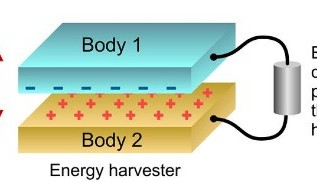Novel Charge Pump Generator
on

Researchers at VTT Technical Research Centre in Finland have come up with a new way to generate electricity by harvesting vibrations from mechanical motion. The VTT Harvester produces charge from mechanical movements which can then be stored to deliver high levels of output power.
This new method harvests the vibration energy that occurs naturally when two surfaces with different work functions are connected via electrodes. The work function is a property of the surface of a material and is defined as the difference between the energy of an electron at rest and the minimum thermodynamic work required to remove that electron from the material. It is also a property of photoelectric devices and cathode-ray tubes. Measures are usually taken to mitigate its (in this case, unwanted) effects but this is the first time they have been exploited to produce energy.
Traditional methods of mechanical energy harvesting rely on piezoelectric and electrostatic devices. Unlike these methods VTT's technique does not require any external power source, electrets or piezo materials. Energy harvesters will be needed in the future for wireless self-powered sensors and medical implants where they could replace batteries. These energy harvesters could open up new opportunities in many application areas such as wearable electronics.
VTT anticipate that this new electricity generation technique should be commercially mature within three to six years. The report was published in the Scientific Reports online journal.


Discussion (0 comments)